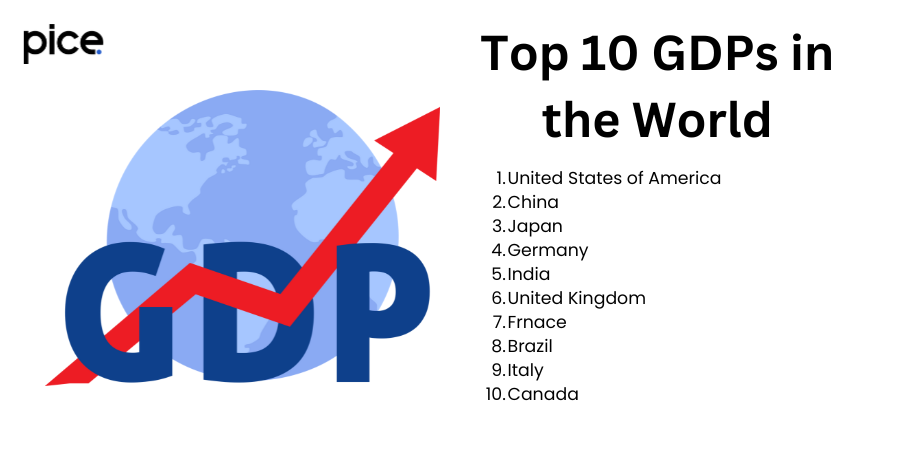GST and Its Impact on GDP
- 24 Aug 24
- 14 mins

GST and Its Impact on GDP
Key Takeaways
- GST fosters a unified market and reduces tax complexity, promoting economic efficiency and boosting GDP growth in India.
- By eliminating the cascading effect of taxes through input tax credits, GST reduces production costs and stimulates consumer demand, positively impacting GDP.
- GST enhances transparency and compliance, increasing government revenues which can be reinvested into public infrastructure and services, further driving economic growth.
- Despite initial compliance burdens and operational disruptions, the long-term benefits of GST, such as attracting foreign investment, contribute significantly to GDP growth.
- The short-term negative impacts of GST, including increased operational costs and inflationary pressures, are outweighed by its overall positive effects on the economy.
What is GST?
The Goods and Services Tax (GST) is a comprehensive indirect tax levied on the manufacture, sale, and consumption of goods and services at a national level. It replaced a multitude of indirect taxes such as value-added tax (VAT), service tax, excise duty, and other state and central taxes, creating a unified market across India. Introduced on July 1, 2017, GST aims to streamline the tax structure by integrating multiple taxes into a single system, thereby simplifying compliance and reducing the tax burden on businesses and consumers.
GST is categorized into four main types: Central GST (CGST), State GST (SGST), Integrated GST (IGST), and Union Territory GST (UTGST). CGST and SGST are levied on intra-state supplies, while IGST is applicable on inter-state and international transactions. This structure ensures that the tax is levied at every stage of the supply chain, but with a provision for input tax credits, which eliminates the cascading effect of taxes and ensures that the tax is ultimately borne by the end consumer.
💡 If you want to pay your GST with Credit Card, then download Pice Business Payment App. Pice is the one stop app for all paying all your business expenses.
The introduction of GST has brought several positive impacts, including increased transparency in the tax system, a reduction in tax evasion, and a more efficient tax administration. However, the transition also posed significant challenges, such as the need for businesses to adapt to a new tax regime, initial compliance burdens, and issues with the IT infrastructure supporting GST filings. Despite these challenges, GST is considered the biggest tax reform in India, aiming to create a more robust and transparent tax structure that supports economic growth.
What is GDP?
Gross Domestic Product (GDP) is a key indicator used to measure the economic performance of a country. It represents the total monetary value of all goods and services produced within a nation's borders over a specified period, usually annually or quarterly. GDP is a critical measure because it provides a comprehensive overview of a country's economic activity, health, and growth.
GDP can be measured using three different approaches: the production approach, the income approach, and the expenditure approach. The production approach calculates GDP by summing the value added at each stage of production, the income approach adds up all incomes earned by individuals and businesses, including wages, profits, and taxes minus subsidies, and the expenditure approach sums up all expenditures made in the economy, including consumption, investment, government spending, and net exports (exports minus imports).
GDP is often used to compare the economic performance of different countries. It helps policymakers, economists, and investors make informed decisions about economic policy, investments, and strategic planning. For instance, a growing GDP indicates a healthy and expanding economy, which can attract investments and create job opportunities, while a declining GDP can signal economic troubles and may lead to changes in economic policy to stimulate growth.
Table: Key Aspects of GDP
| Aspect | Description |
|---|---|
| Definition | Total monetary value of all goods and services produced within a nation's borders. |
| Measurement Approaches | Production approach, income approach, expenditure approach. |
| Significance | Indicates economic performance, health, and growth of a country. |
| Uses | Policy making, economic analysis, investment decisions, and strategic planning. |
How is GDP Calculated?
GDP can be calculated using three main approaches: production, income, and expenditure. Each method provides a different perspective on the economy but ultimately leads to the same GDP figure.
Production Approach
The production approach, also known as the output approach, calculates GDP by summing the value of output produced by every enterprise in the economy. It considers the gross value added (GVA) at each stage of production.
The formula is: GDP=∑(Gross Value of Output−Value of Intermediate Consumption)
Income Approach
The income approach calculates GDP by adding up all incomes earned by individuals and businesses, including wages, profits, rents, and taxes minus subsidies.
The formula is: GDP = Compensation of Employees + Gross Operating Surplus + Gross Mixed Income + Taxes on Production and Imports − Subsidies
Expenditure Approach
The expenditure approach calculates GDP by summing all expenditures made in the economy. This includes consumption, investment, government spending, and net exports.
The formula is: GDP=C+I+G+(X−M)
- CCC = Consumption: Total spending by households on goods and services.
- III = Investment: Total spending on capital goods that will be used for future production.
- GGG = Government Spending: Total government expenditures on goods and services.
- XXX = Exports: Total value of goods and services produced domestically and sold abroad.
- MMM = Imports: Total value of goods and services produced abroad and purchased domestically.
The term (X−M)(X - M)(X−M) represents net exports, which is the difference between the value of exports and the value of imports.
Table: Approaches to GDP Calculation
| Approach | Description |
|---|---|
| Production Approach | Sums the value added at each stage of production. |
| Income Approach | Adds up all incomes earned by individuals and businesses. |
| Expenditure Approach | Sums all expenditures in the economy, including consumption, investment, government spending, and net exports. |
Top 10 GDPs in the World

The countries with the highest GDPs reflect the largest and most dynamic economies in the world. These economies contribute significantly to global economic activities and have substantial impacts on international markets.
United States
The United States has the largest GDP, driven by its diverse and technologically advanced economy. It leads in innovation, finance, and consumer goods. The GDP per capita is also among the highest, indicating a high standard of living.
China
China is the second-largest economy, with rapid industrial growth and significant contributions from manufacturing and exports. Its GDP per capita is lower compared to Western economies but has been increasing steadily.
Japan
Japan's economy is characterized by its advanced technology and automobile industries. It has a high GDP per capita, reflecting its developed economy and high living standards.
Germany
Germany is the largest economy in Europe, known for its engineering, automotive, and manufacturing sectors. It has a high GDP per capita and plays a crucial role in the European Union.
India
India has a rapidly growing economy, driven by services, manufacturing, and technology sectors. Its GDP per capita is lower compared to developed countries, but economic reforms like GST aim to boost growth and increase income levels.
United Kingdom
The UK has a diverse economy with significant contributions from finance, services, and manufacturing. It has a high GDP per capita and is a leading financial center globally.
France
France's economy is driven by diverse industries, including aerospace, luxury goods, and agriculture. It has a high GDP per capita and plays a significant role in the European economy.
Brazil
Brazil is the largest economy in South America, with significant contributions from agriculture, mining, and manufacturing. Its GDP per capita is moderate, reflecting its developing economy status.
Italy
Italy's economy is known for its automotive, fashion, and design industries. It has a high GDP per capita and is a significant player in the European market.
Canada
Canada has a resource-rich economy with strong sectors in natural resources, manufacturing, and services. It has a high GDP per capita and is a major trade partner with the United States.
Table: Top 10 GDPs in the World
| Country | GDP (in trillion USD) | GDP Per Capita (USD) |
|---|---|---|
| United States | 21.4 | 65,280 |
| China | 14.3 | 10,262 |
| Japan | 5.1 | 40,847 |
| Germany | 4.0 | 46,445 |
| India | 2.9 | 2,104 |
| United Kingdom | 2.8 | 42,558 |
| France | 2.7 | 41,760 |
| Brazil | 2.1 | 9,135 |
| Italy | 2.0 | 33,228 |
| Canada | 1.8 | 46,233 |
How does GST Impact GDP?
The introduction of the Goods and Services Tax (GST) in India marked a significant shift in the country's indirect taxation system, with far-reaching implications for the Gross Domestic Product (GDP). GST aims to create a unified market by replacing multiple indirect taxes, thereby simplifying the tax structure and promoting economic efficiency. This comprehensive tax reform cumulative impacts GDP through various channels including tax compliance, production costs, and consumer behavior.
Economic Growth and Unified Market: GST promotes economic growth by fostering a unified market, which eliminates the previous barriers to inter-state trade. By doing away with indirect taxes like central sales tax and state VAT, GST reduces the complexity and cost of doing business across state borders. This integration encourages businesses to expand their operations nationwide, leading to increased economic activity and higher GDP. The transparent structure of GST also helps in reducing tax evasion, ensuring a broader tax base and higher tax revenues for the central government.
Impact on Domestic Products and Supply Chain: The GST structure, with its provision for input tax credits, reduces the tax burden on domestic products. Businesses can claim credits for the taxes paid on inputs, which eliminates the cascading effect of taxes and lowers production costs. This reduction in production costs can lead to lower prices for consumers, stimulating consumption demand and boosting GDP. Moreover, the streamlined supply chain under GST facilitates smoother operations and quicker turnaround times, further enhancing productivity and economic output.
Role of Tax Authorities and Compliance: GST simplifies tax compliance by introducing a single, centralized system for tax collection and filing. This reduces the compliance burden on businesses, enabling them to focus more on their core activities rather than navigating complex tax regulations. The role of tax authorities becomes more efficient, as they can now monitor tax compliance more effectively through digital platforms. This improved compliance leads to higher tax collections, which can be used for public investments and services, indirectly contributing to GDP growth.
GST Positive Impact on GDP
The implementation of GST has several positive economic impacts on GDP, primarily by enhancing economic efficiency, reducing tax burden, and fostering a more integrated market. These benefits collectively contribute to higher economic growth and improved GDP.
Economic Efficiency and Tax Structure: GST introduces a transparent and efficient tax structure that reduces the complexity associated with multiple indirect taxes. By integrating taxes like excise duty, service tax, and VAT into a single system, GST minimizes the compliance costs and administrative burdens for businesses. This efficiency encourages investment and entrepreneurial activities, leading to higher economic output and GDP growth.
Reduction in Tax Burden: One of the key features of GST is the elimination of the cascading effect of taxes through the provision of input tax credits. Businesses can offset the taxes paid on inputs against the taxes on their outputs, significantly reducing the overall tax burden. This reduction in tax burden lowers production costs, enabling businesses to offer competitive prices. Lower prices stimulate consumer demand, driving higher sales and contributing to GDP growth.
Enhanced Transparency and Compliance: GST promotes transparency in the tax system by requiring regular returns and digital compliance. This transparency reduces opportunities for tax evasion, ensuring that more businesses contribute their fair share of taxes. Higher compliance rates increase tax revenues for the central government, which can be used for public infrastructure and services, further boosting economic growth.
Attracting Foreign Investment: A streamlined and predictable tax regime under GST makes India an attractive destination for foreign investment. Multinational companies prefer operating in environments with clear and consistent tax policies. GST's transparent structure and reduced compliance complexities provide such an environment, encouraging foreign direct investment (FDI). Increased FDI brings in capital, technology, and expertise, contributing to GDP growth.
GST Negative Impact on GDP
While GST brings numerous benefits, it also poses certain challenges and negative impacts on GDP, particularly during the initial phases of implementation. These challenges include compliance burdens, increased costs, and short-term economic disruptions.
Initial Compliance Burden: The transition to GST required businesses to adapt to a new tax regime, which involved significant changes to their accounting and IT systems. This initial compliance burden increased operational costs for businesses, as they had to invest in new software, train staff, and ensure compliance with the new regulations. Small and medium enterprises (SMEs) were particularly affected, as they often lacked the resources to manage these changes smoothly. These compliance burdens temporarily slowed down economic activity, negatively impacting GDP.
Increased Operational Costs: The implementation of GST led to an increase in operational costs for businesses due to the need for regular filings and adherence to compliance requirements. The requirement to file regular returns and maintain detailed records added to the administrative burden, increasing overall costs. These increased costs could be passed on to consumers in the form of higher prices, potentially reducing consumption demand and negatively impacting GDP.
Short-Term Economic Disruptions: The introduction of GST caused short-term disruptions in the supply chain as businesses adjusted to the new tax system. The initial confusion and lack of clarity regarding certain aspects of GST led to delays and inefficiencies in the production and distribution processes. These disruptions impacted the availability of goods and services, slowing down economic activity and negatively affecting GDP growth.
Impact on Inflation: The initial phase of GST implementation saw an impact on inflation, as the new tax rates led to changes in the prices of goods and services. While the overall aim of GST is to reduce the tax burden, certain goods and services experienced price increases due to the new tax rates. This rise in prices contributed to inflationary pressures, which can have a negative impact on consumer spending and economic growth.
Cumulative Negative Impact: Despite the long-term benefits, the cumulative negative impact of GST in the short term cannot be overlooked. The increased compliance costs, operational disruptions, and inflationary pressures collectively slowed down economic activity during the transition period. However, these negative impacts are expected to diminish over time as businesses and consumers adjust to the new system, allowing the positive effects of GST to take full effect.
 By
By 
















